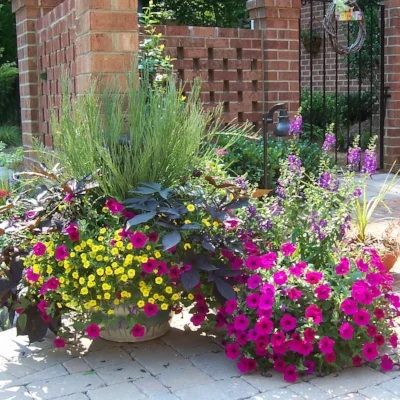Who's Been Eating My Sedum?
If your sedums are getting ragged-looking like this, you can blame the birds. In summer, birds seeking water will begin eating the juicy, succulent leaves of sedum. Maybe they like the taste* too, because the damage has been seen with available water in close proximity. Fortunately, the birds usually leave the flower buds alone to bloom in late summer, but the whole plant certainly looks worse for wear for the rest of the summer.
If birds eat your sedums every year, one solution is to cover your sedum with bird netting for a good part of the summer. You may also have luck with hologram tape or other visual repellents. Spray-on repellents don't work on birds since they have little or no sense of taste or smell.**
*Actually, probably not...
**...and that's why

Here are the common ways your landscape is telling you it needs help.
Controlling fall and winter weeds is a constant battle. Here are some of the reasons control can be difficult.
New Garden Landscaping & Nursery feels that Boxwood Blight could have a major impact on landscapes containing boxwood in the near future. Here’s what you need to know about the disease.
Since fall is the time to plant spring blooming bulbs, here are the answers to some common questions about bulbs.
Don't panic, there are a few common (and benign) reasons that trees drop leaves in summer.
Ugh! What’s nastier than a sack of crawly caterpillars hanging from your trees? How about a dozen of ‘em?
Quick tips for avoiding the fungal disease Brown Patch in lawns
Blueberries make great container plants! Watch this video from our friends at Espoma for tips and see how easy it is to grow blueberries in containers.
Good container plantings require little maintenance aside from watering and can enhance your home through the spring, summer, and fall.
Unlike some other flowering plants, crapes will develop their flower buds on new growth.
This is a question we have been asked frequently this fall.
Where and why this is not bad advice, and where it’s a terrible idea.






















